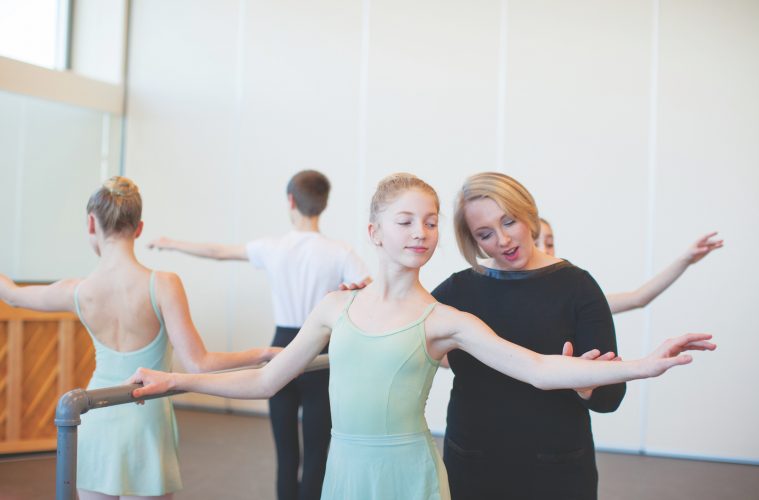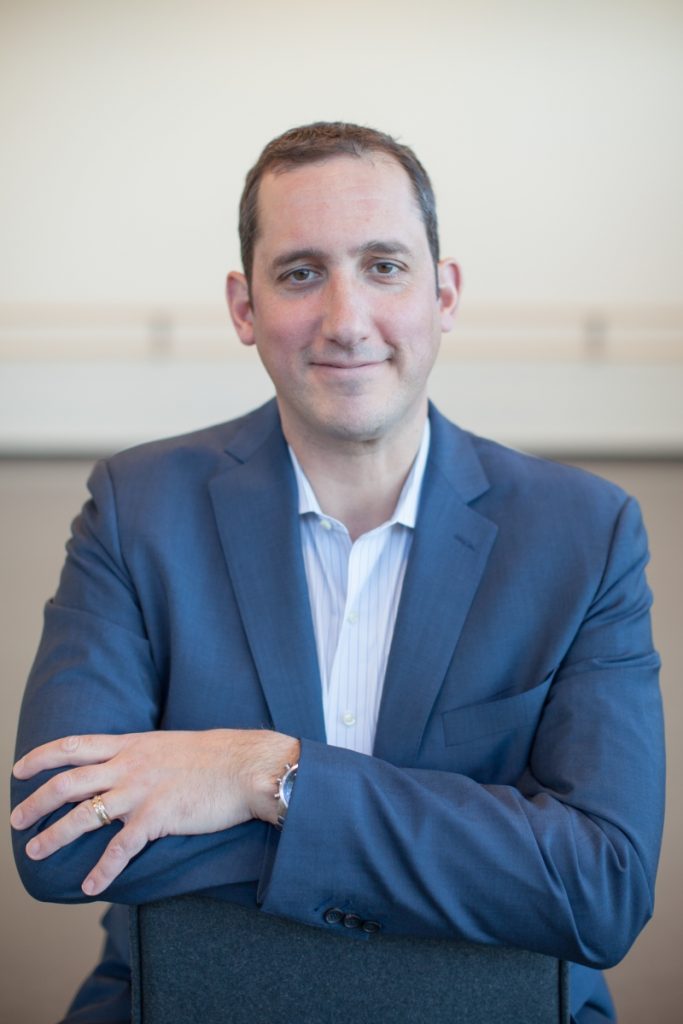 The overarching goal of the Boston Ballet School, says managing director Dave Czesniuk is to build community, remove barriers, and allow students to reach their potential.
But Czesniuk’s affection is natural, considering he’s the managing director for the Boston Ballet School. One of the largest such institutions in the country, with three studios and a $9 million budget, the school serves some 5,000 students a year, from Bolshoi-bound aspiring pros to athletic retirees to movement-curious 16-month-olds. The overarching goal, Czesniuk says, is to build community, remove barriers, and allow students to reach their potential. “The emphasis of everything we do is on creating an optimal student experience. Regardless of where they’re coming from, where they are in terms of development, or how intense their interest is, everyone is entitled to an optimal experience in our studios.”
The overarching goal of the Boston Ballet School, says managing director Dave Czesniuk is to build community, remove barriers, and allow students to reach their potential.
But Czesniuk’s affection is natural, considering he’s the managing director for the Boston Ballet School. One of the largest such institutions in the country, with three studios and a $9 million budget, the school serves some 5,000 students a year, from Bolshoi-bound aspiring pros to athletic retirees to movement-curious 16-month-olds. The overarching goal, Czesniuk says, is to build community, remove barriers, and allow students to reach their potential. “The emphasis of everything we do is on creating an optimal student experience. Regardless of where they’re coming from, where they are in terms of development, or how intense their interest is, everyone is entitled to an optimal experience in our studios.”
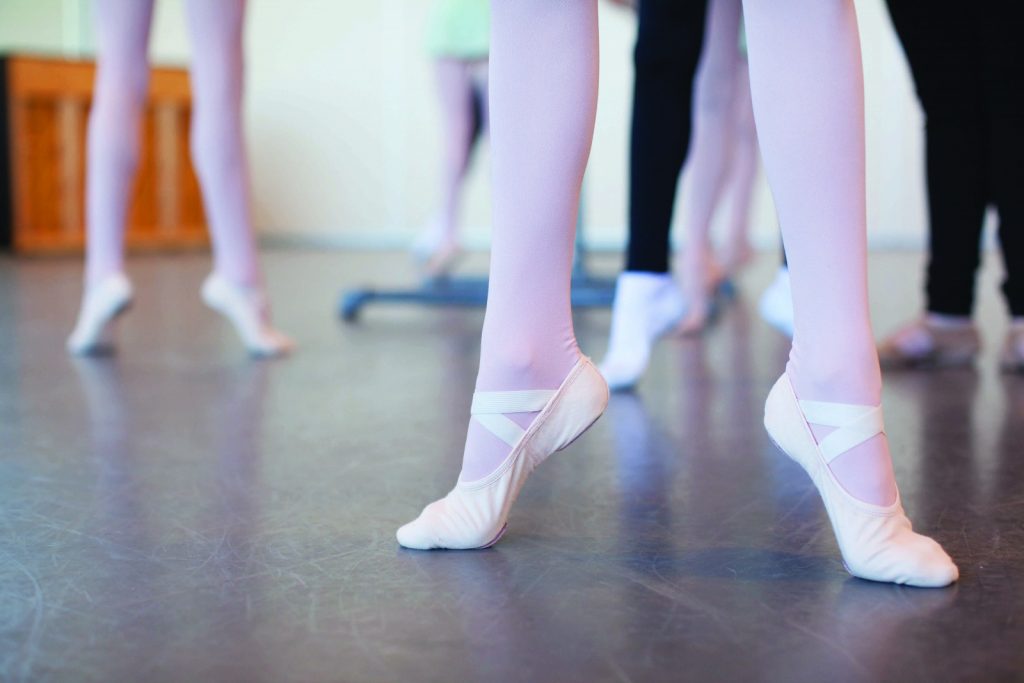 Czesniuk’s working life has been at the intersection of sports, education, and the arts. First, it was teaching and training cadets and Division I athletes as a performance enhancement consultant at the US Military Academy at West Point; later, he arrived at Northeastern University’s Center for the Study of Sport In Society, a group devoted to sports and social justice. Czesniuk first encountered the Boston Ballet when he was assistant dean of partnerships and alliances and executive director of community engagement at Northeastern, helping devise a program for professional dancers to earn a bachelor’s degree while plying their trade.
“For me, it was about creating access [to education] in a realm where it was previously seen as impossible,” he says. “Before, you either had to choose professional dance or go get a degree. But with today’s advancements, you can do both and still be set up for success when you retire from the ballet, at the ripe old age of 35.”
Czesniuk’s working life has been at the intersection of sports, education, and the arts. First, it was teaching and training cadets and Division I athletes as a performance enhancement consultant at the US Military Academy at West Point; later, he arrived at Northeastern University’s Center for the Study of Sport In Society, a group devoted to sports and social justice. Czesniuk first encountered the Boston Ballet when he was assistant dean of partnerships and alliances and executive director of community engagement at Northeastern, helping devise a program for professional dancers to earn a bachelor’s degree while plying their trade.
“For me, it was about creating access [to education] in a realm where it was previously seen as impossible,” he says. “Before, you either had to choose professional dance or go get a degree. But with today’s advancements, you can do both and still be set up for success when you retire from the ballet, at the ripe old age of 35.”
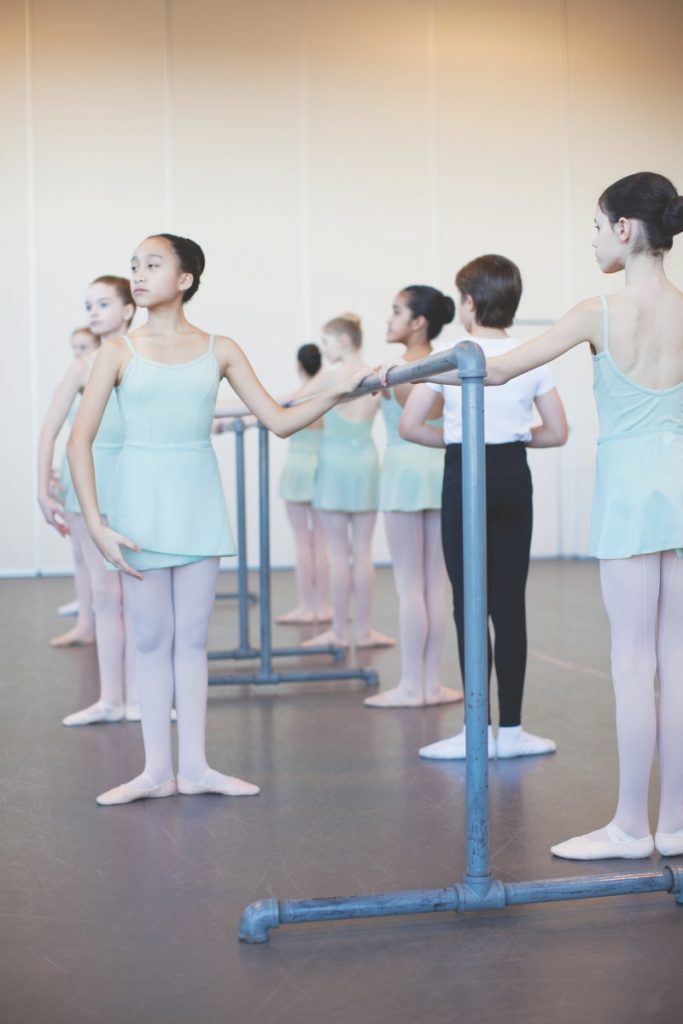 In 2016, he joined the Boston Ballet School full-time. Under the guidance of Boston Ballet artistic director Mikko Nissinen and Boston Ballet School director Margaret Tracey, the school’s three studios host a range of curriculua: an audition-only program for pre-professionals, a classical ballet program for ages 8 to 18, children’s classes for students as young as 16 months through elementary school, and continuing education for adults. In many ways, military cadets, Division I athletes, and ballet performers aren’t so different, Czesniuk says: All share otherworldly focus, attention to detail, and an ability to regain their confidence after setbacks. “It’s not so much being able to keep your eyes fixated on a certain spot as keeping your priorities, hopes, and dreams in front of you.”
In 2016, he joined the Boston Ballet School full-time. Under the guidance of Boston Ballet artistic director Mikko Nissinen and Boston Ballet School director Margaret Tracey, the school’s three studios host a range of curriculua: an audition-only program for pre-professionals, a classical ballet program for ages 8 to 18, children’s classes for students as young as 16 months through elementary school, and continuing education for adults. In many ways, military cadets, Division I athletes, and ballet performers aren’t so different, Czesniuk says: All share otherworldly focus, attention to detail, and an ability to regain their confidence after setbacks. “It’s not so much being able to keep your eyes fixated on a certain spot as keeping your priorities, hopes, and dreams in front of you.”
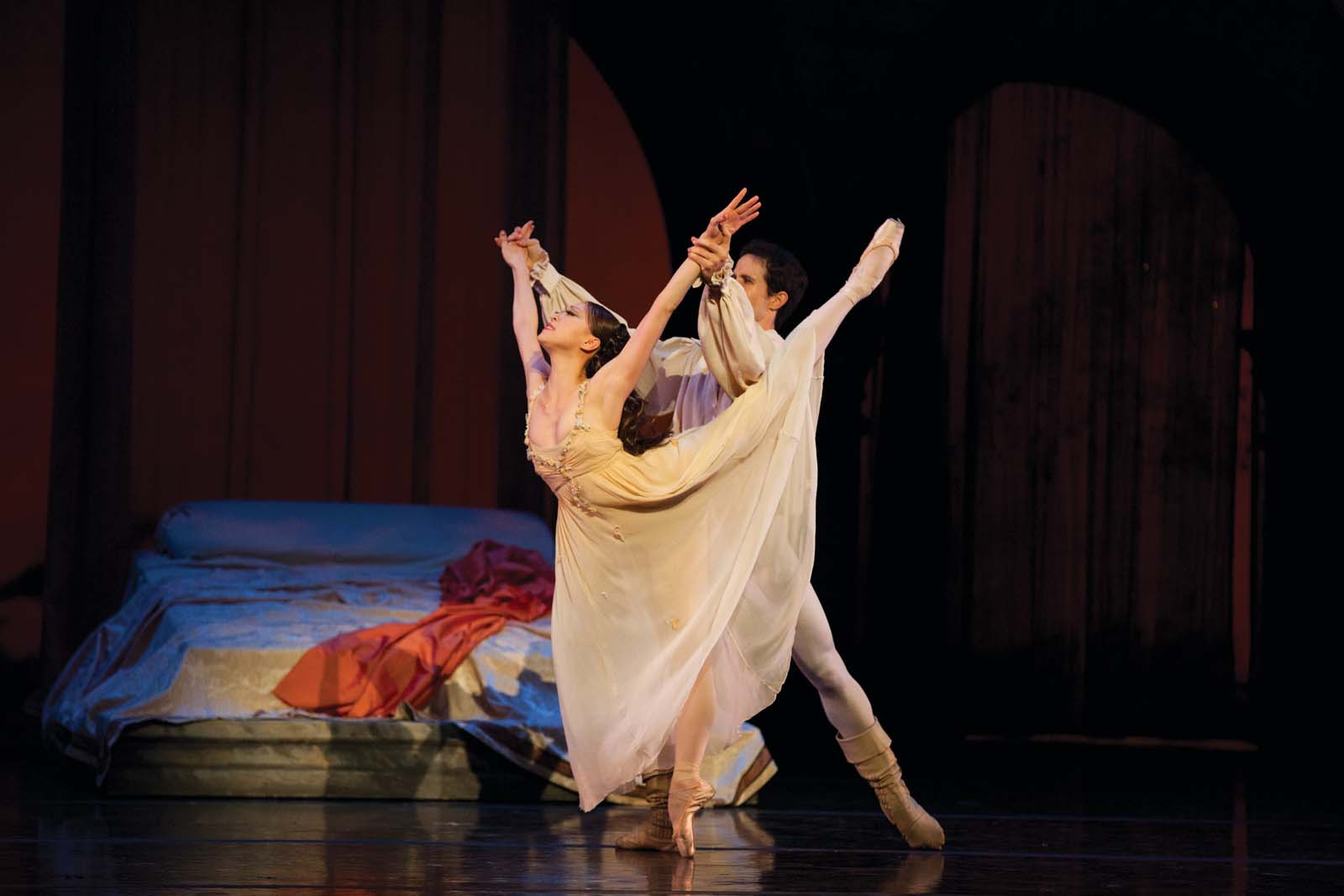 Photo by Rosalie O’Connor
Boston Ballet’s Misa Kuranaga and Nelson Madrigal in John Cranko’s Romeo and Juliet
The Boston Ballet School’s North Shore studio in Marblehead, located within the Lynch/van Otterloo YMCA, demonstrates that a rigorous education in ballet doesn’t necessarily require lofty career expectations. The North Shore studio serves young children to high schoolers as well as their parents, giving students a chance to perform in Boston once a year while letting hobbyists use ballet to explore human movement without onerous expectations. “In the North Shore, families have recreational interests that are very diverse,” says Czesniuk. “We want to provide opportunities for people to focus intently and deeply on ballet when they’re in our space, but in a way that’s understanding of the cultural standards of the area.”
Photo by Rosalie O’Connor
Boston Ballet’s Misa Kuranaga and Nelson Madrigal in John Cranko’s Romeo and Juliet
The Boston Ballet School’s North Shore studio in Marblehead, located within the Lynch/van Otterloo YMCA, demonstrates that a rigorous education in ballet doesn’t necessarily require lofty career expectations. The North Shore studio serves young children to high schoolers as well as their parents, giving students a chance to perform in Boston once a year while letting hobbyists use ballet to explore human movement without onerous expectations. “In the North Shore, families have recreational interests that are very diverse,” says Czesniuk. “We want to provide opportunities for people to focus intently and deeply on ballet when they’re in our space, but in a way that’s understanding of the cultural standards of the area.”
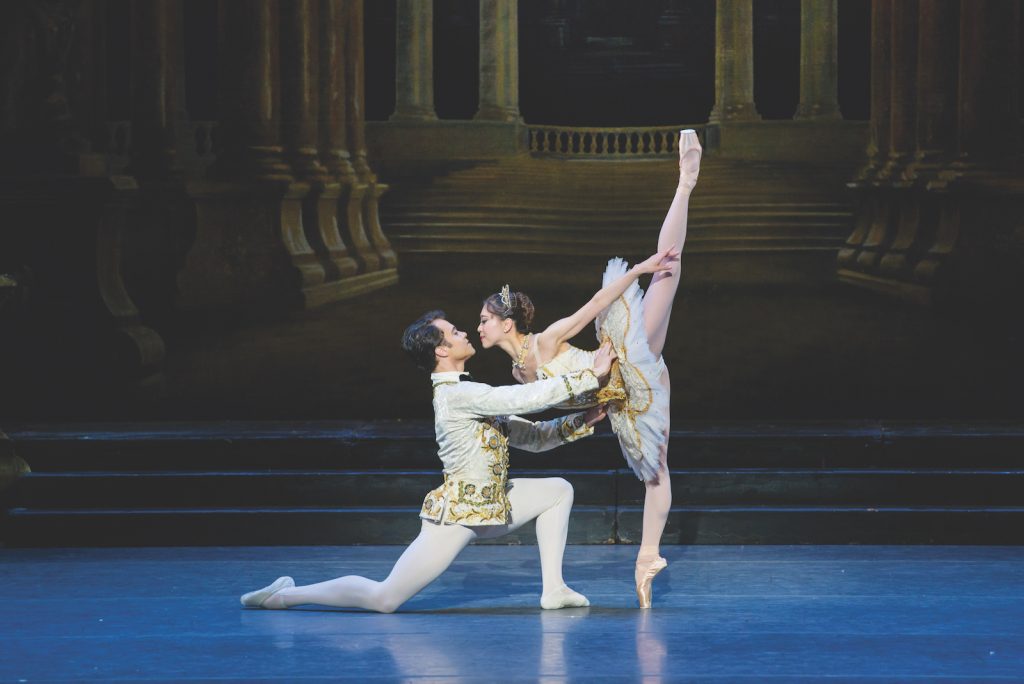 Photo by Liza Voll
Paulo Arrais and Misa Kuranaga in Marius Petipa’s The Sleeping Beauty
He’s also had a firsthand look at the profound transformation devoted students can achieve. He’s seen Tyson Clark, a public school student from Czesniuk’s hometown of Somerville, matriculate from the Boston Ballet School to the Boston Ballet’s second company apprentice program, and accompanied Clark on a trip to The National Ballet of Canada last year, where he performed alongside peers from Brazil and London. “To be able to see him enter his professional career after pursuing ballet from his younger years—from a semi-weekly to weekly to daily basis—is absolutely thrilling,” he says. “That’s what it’s about: seeing education take him places he probably never imagined he would go.”
Those kinds of stories reinforce Czesniuk’s goals around the Boston Ballet School: to expand access to education and programming at the Opera House. He thinks back on the first time he saw the ballet at 37 years old. “Before I went, I wouldn’t have necessarily expected to walk out of the Opera House energized,” Czesniuk says. “But I did.”
bostonballet.org
Photo by Liza Voll
Paulo Arrais and Misa Kuranaga in Marius Petipa’s The Sleeping Beauty
He’s also had a firsthand look at the profound transformation devoted students can achieve. He’s seen Tyson Clark, a public school student from Czesniuk’s hometown of Somerville, matriculate from the Boston Ballet School to the Boston Ballet’s second company apprentice program, and accompanied Clark on a trip to The National Ballet of Canada last year, where he performed alongside peers from Brazil and London. “To be able to see him enter his professional career after pursuing ballet from his younger years—from a semi-weekly to weekly to daily basis—is absolutely thrilling,” he says. “That’s what it’s about: seeing education take him places he probably never imagined he would go.”
Those kinds of stories reinforce Czesniuk’s goals around the Boston Ballet School: to expand access to education and programming at the Opera House. He thinks back on the first time he saw the ballet at 37 years old. “Before I went, I wouldn’t have necessarily expected to walk out of the Opera House energized,” Czesniuk says. “But I did.”
bostonballet.org

